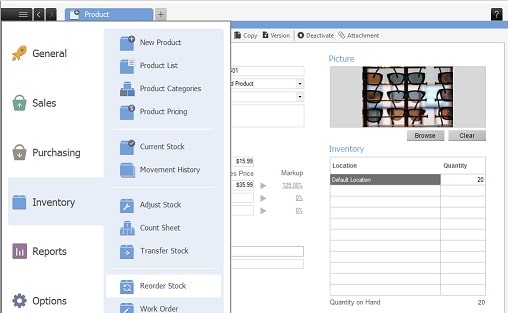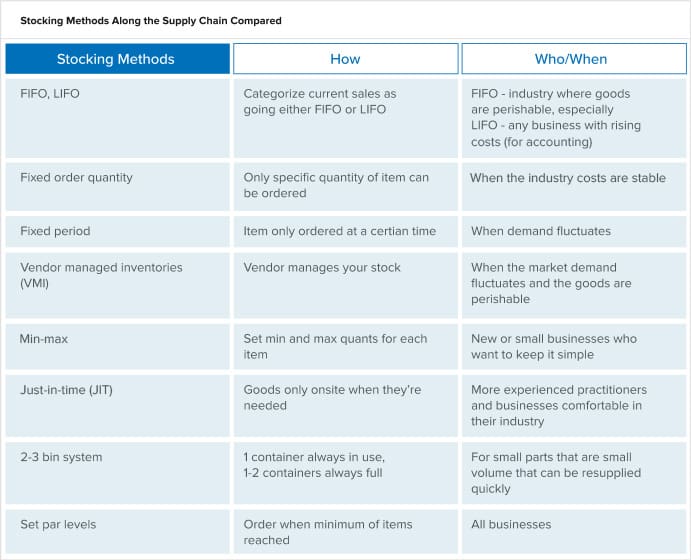

- #Finance and inventory management for small business how to
- #Finance and inventory management for small business update
- #Finance and inventory management for small business manual
- #Finance and inventory management for small business full
- #Finance and inventory management for small business software
Boxes wear out, packaging designs change, and trends shift. But it also applies to businesses that sell non-perishable goods. You want to get rid of the Monday bags first, so you don’t even put the Thursday bags out until the older stuff is gone.įIFO is most effective for businesses that sell perishable goods, because it cuts down on spoilage costs and is the most accurate way of measuring the value of your inventory. You get 100 bags of coffee on Monday, and another 60 bags on Thursday. The FIFO method assumes that you will sell all of the oldest stock in your inventory first, before your new stock.įor example: let’s say you run a small café that gets fresh coffee bean shipments every Monday and Thursday. If you’ve ever stocked shelves at a grocery store, you’re probably already familiar with FIFO. Implement the first in, first out (FIFO) method Ideally, you should focus your spot checks on your fastest-moving and your most expensive products. These involve picking a product at random and making sure the reported stock matches the actual stock. If you do a year-end inventory or cycle count and notice that there’s a lot of stock missing, you should start doing spot checks. For example, a boutique might audit all of their shoes one month, then all of their shirts the next, and so on. Instead of doing the audit all in one go, you can spread it throughout the year and do it one product type at a time.
#Finance and inventory management for small business full
You’ll want to schedule a full inventory well ahead of time, preferably for a period when there are no sales or deliveries, and ideally at the end of the year when your accountant needs an accurate inventory valuation. This involves going through your entire inventory manually, item by item, and making sure the numbers in your inventory records match the numbers in your warehouse/on your shelves.

You can do this in three different ways: A full year-end inventory
#Finance and inventory management for small business software
(If you’re going to print lots of labels, Wirecutter has a great consumer guide to label makers that you should check out.) Periodically audit your stockĮven if you use software and label scanners to track your inventory, you should still occasionally count it manually to see if it matches what your inventory tracking software says.

If your products don’t already come with barcode labels pre-attached, not to worry: most POS systems also have built-in tools that let you automatically generate and print your own barcode labels, and most are compatible with popular Bluetooth barcode scanners like Socket Mobile’s SocketScan series and Zebra’s Symbol CS4070. Scanning your products into your sales and inventory ledgers automatically using a barcode scanner can speed up the checkout process, cut down on errors, and make inventory tracking automatic. Manually entering sales into a ledger or POS system can get tedious, especially if you run a retail business with lots of daily sales. For example, Square has good all-purpose tools for different sales channels, Toast’s are good for restaurants, and Shopify’s are good for ecommerce businesses. Keep in mind that the inventory management systems that come with POS systems are often tailored to different industries. Most POS systems also come with a card scanner that lets you accept card payments, send invoices and purchase orders, and offer advanced sales analytics tools. Product code (UPC barcode number, SKU number, etc.).Name, price and quantity of product sold.Many small businesses still use pen and paper to track inventory, but popular POS systems like Square, Vend or Lightspeed offer inventory systems let you do a whole lot more.Ī good POS system can plug into a barcode scanner (see below), process debit/credit card payments, print receipts, and make the entire checkout process easier for high-volume sellers.Ī good POS system can also track all of the following information in real-time: If you have a high-volume business, you won’t be able to do this manually, but inventory management software can help you with this (more on that below).Ī good sales or inventory ledger should record information like:Īs an example, your ledger might look like this:
#Finance and inventory management for small business update
At the end of the day, use the numbers in your ledger to update your total inventory numbers.

You can do this with most accounting software, a spreadsheet, or even a physical notebook.Īny time you make a sale or a purchase, record it in the ledger.
#Finance and inventory management for small business manual
The most barebones method of tracking inventory is to set up a manual inventory or sales ledger.
#Finance and inventory management for small business how to
Here’s how to make sure your inventory data is accurate and up to date: Set up an inventory ledger You can’t manage your inventory if you can’t track it.


 0 kommentar(er)
0 kommentar(er)
